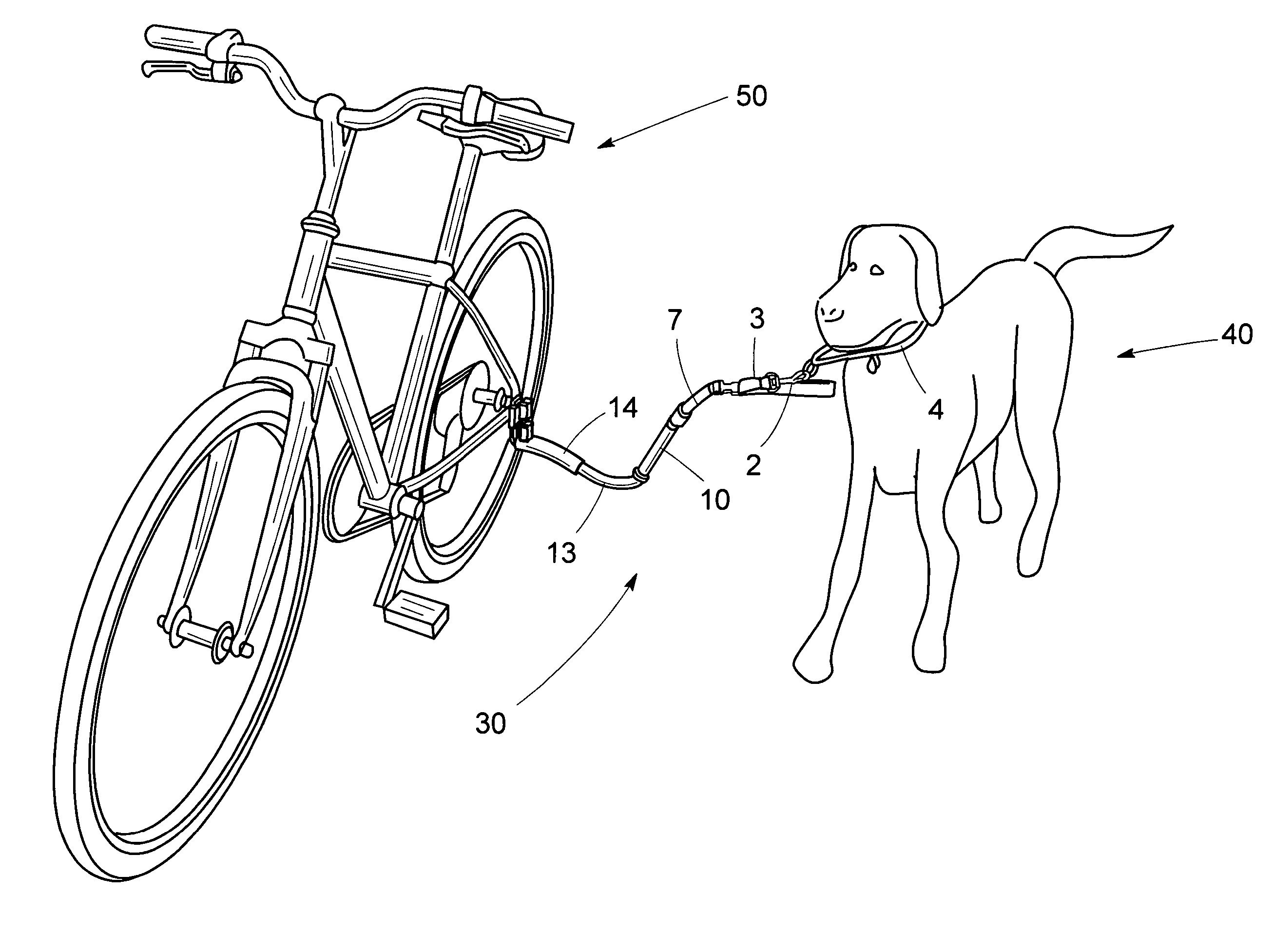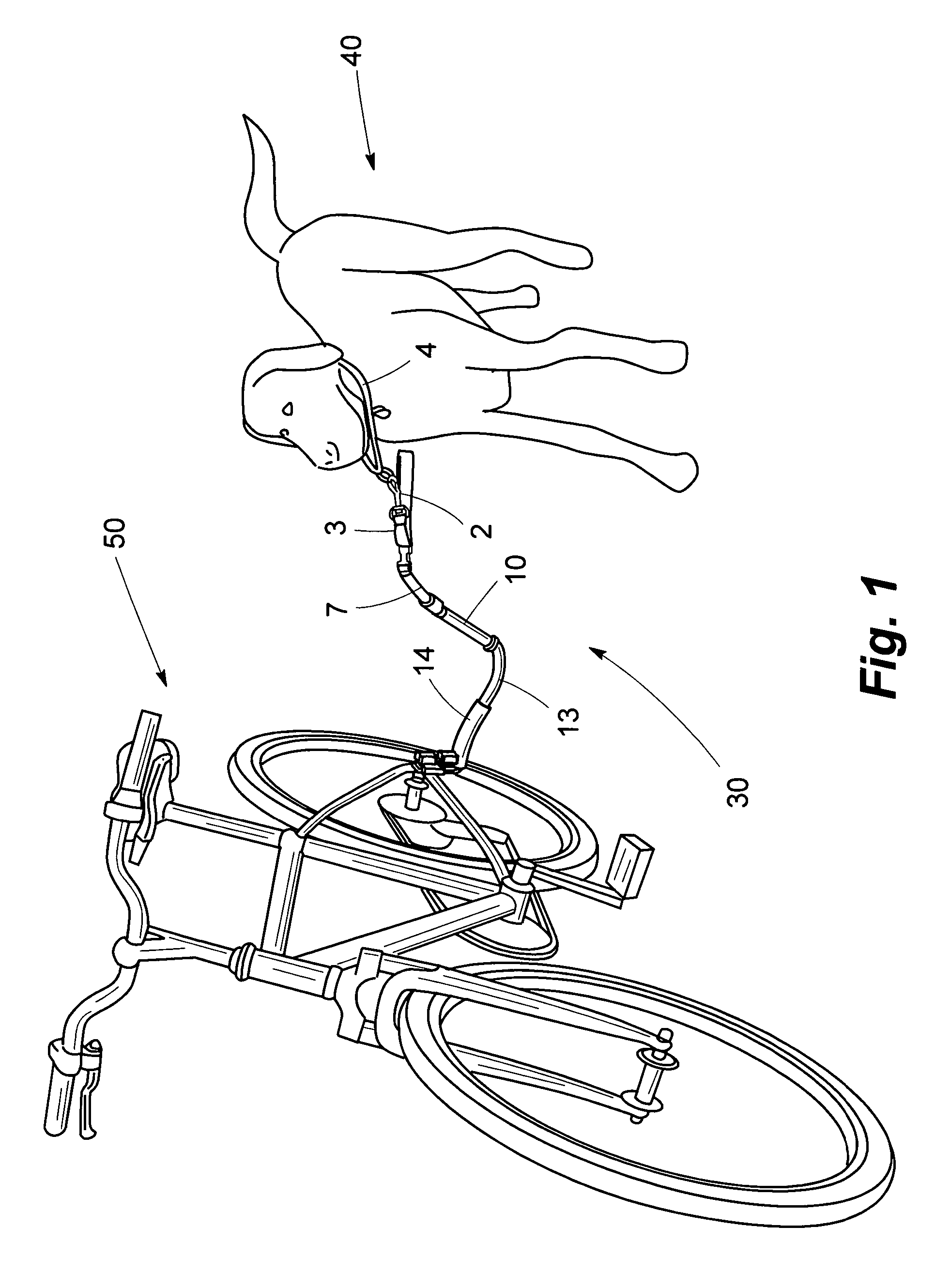Dog leash for use on bicycle
a technology for dogs and bicycles, applied in vehicle safety belts, taming and training devices, vehicle components, etc., can solve the problems of not having a force limit feature the dog cannot run in view beside the bicycle rider and then trail behind, and the device has no force limit feature. to protect the animal and the rider, and the effect of sufficient flexibility
- Summary
- Abstract
- Description
- Claims
- Application Information
AI Technical Summary
Benefits of technology
Problems solved by technology
Method used
Image
Examples
Embodiment Construction
[0022]In the drawings and referring more particularly to FIG. 1, a leash according to the present invention, which is indicated generally by the reference number 30, is mounted on a typical bicycle 50. A close-up of the leash 30, prior to its installation, is shown in FIG. 2.
[0023]As illustrated on FIG. 3, the leash 30 is installed on the frame supporting the rear axle of the bicycle 50. Included in the leash 30 is a mounting structure having outer and inner clamp members 15 and 20 (FIGS. 3 and 4). The mounting structure is clamped on the frame near the rear axle without removing the rear wheel of the bicycle. The inner clamp member 20 is placed inside the frame with mounting bolts 19, 21 pointing outwardly from the bicycle 50. Means for retaining the outer and inner clamp members 15 and 20 in assembled relation includes not only the mounting bolts 19 and 21 but also nuts 22 which are preferably threaded hand knobs. In the preferred embodiment, the shanks of bolts 19, 20 are held, d...
PUM
 Login to View More
Login to View More Abstract
Description
Claims
Application Information
 Login to View More
Login to View More - R&D
- Intellectual Property
- Life Sciences
- Materials
- Tech Scout
- Unparalleled Data Quality
- Higher Quality Content
- 60% Fewer Hallucinations
Browse by: Latest US Patents, China's latest patents, Technical Efficacy Thesaurus, Application Domain, Technology Topic, Popular Technical Reports.
© 2025 PatSnap. All rights reserved.Legal|Privacy policy|Modern Slavery Act Transparency Statement|Sitemap|About US| Contact US: help@patsnap.com



